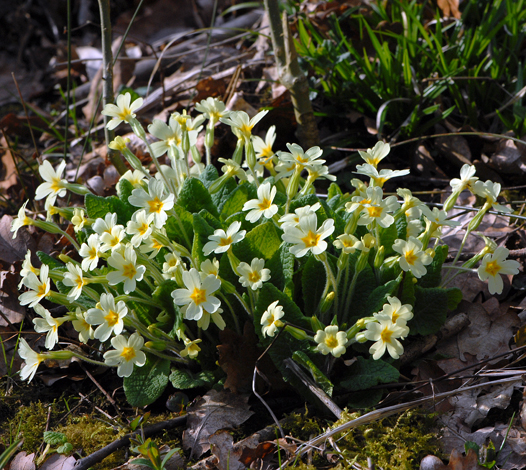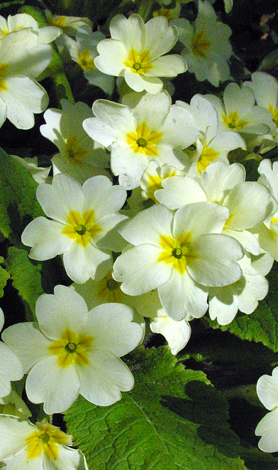Primula vulgaris Primrose CCC DD N


The second large photograph isn't the best clump of Primroses you'll ever see but I've added them to the site because it reminds me of a great day out. I'd gone up to Scotland to visit a couple of football grounds (Raith Rovers and Alloa Athletic). Both were evening matches so it left a whole day to explore the countryside.
I decided to climb a couple of Munros north of Dundee (Dreish and Mayar) and while climbing these I spotted my first mountain hares. They were still in winter clothing but as there was no snow around, even on the top, they showed up beautifully. I hadn't realised how big they are - like small dogs and very quick too. Very high up, circling over head was a very big bird. I couldn't make it out but highly probably it was an Eagle - they nest in Corrie Fee and feed on mountain hares. As I descended from Mayar and walked for a short way through the woods to the car park, these Primroses were a welcome sight on the banks of a ditch.
There are two types of primrose flower which are adaptations to help cross pollination. Pin-eyed primroses have the stigma at top of the flower tube while thrum-eyed primroses have a ring of anthers at the top of the flower tube. Long-tongued insects such as butterflies like Gonepteryx rhamni (The Brimstone butterfly) will seek out nectar in the base of the flower tube and get pollen stuck at the appropriate part of the proboscis suitable for cross fertilising either the thrum or pin-eyed stigma of another flower.
Primula vulgaris has been recorded from every part of the British Isles and Ireland including the outer islands like Shetland and St Kilda.
LHS: Waresley Wood, Cambridgeshire 8th April 2010 RHS: Warburton Wood Cheshire, 14th April 2006
Added on 16th October 2004, amended on February 1st 2005, updated 25th July 2011





